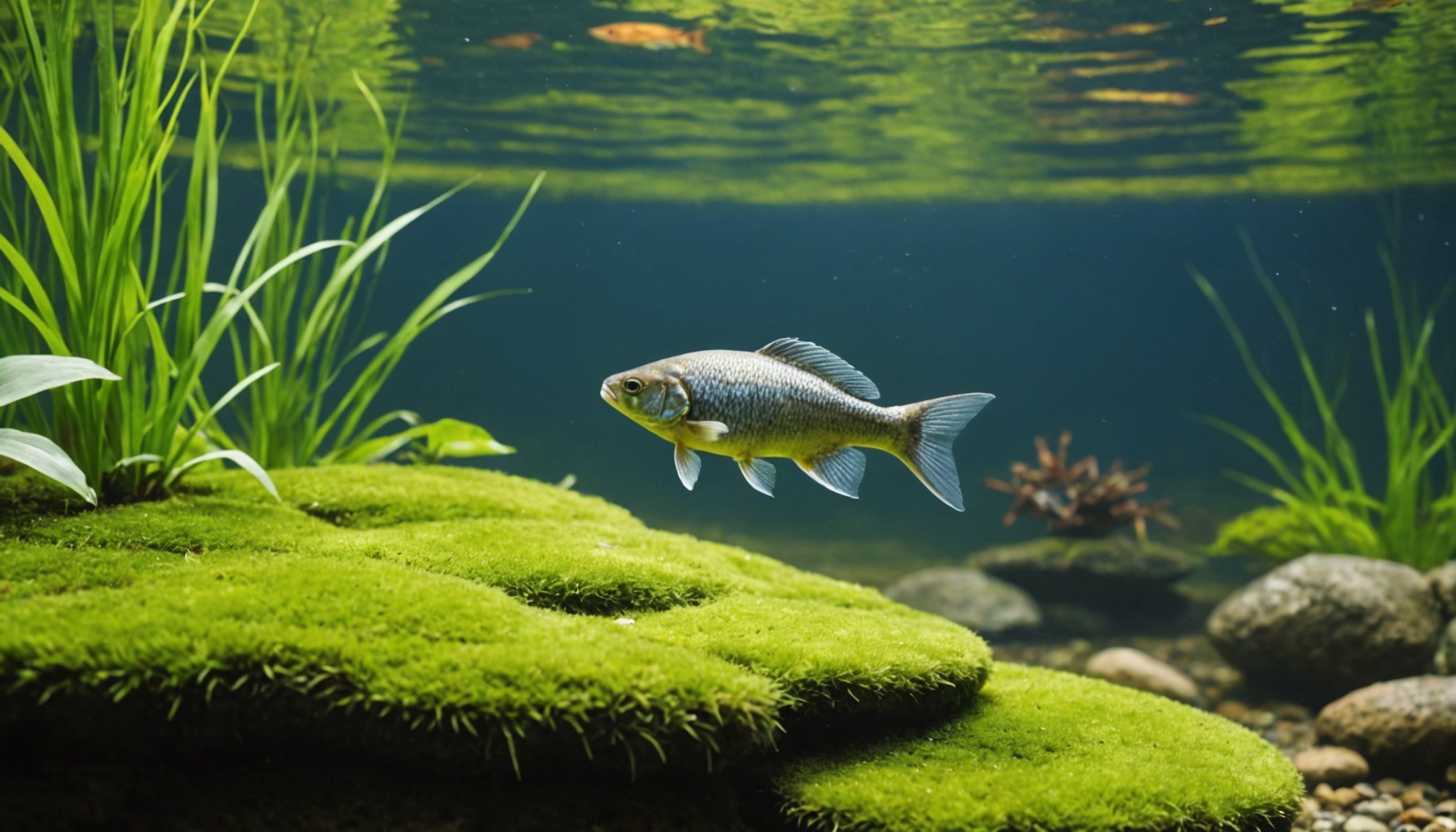Overview of Fish Varieties for UK Ponds
Selecting appropriate fish species is crucial for maintaining a healthy pond ecosystem in the UK. Introducing suitable fish types not only supports pond health but also enhances biodiversity, contributing positively to local ecosystems. Different species play significant ecological roles, and understanding these can help create a balanced and thriving aquatic environment.
Top Fish Species for UK Ponds
Choosing top fish species for UK ponds involves considering their specific ecological roles. Many of these species contribute to nutrient cycling, serve as pest control agents, or provide aesthetic and cultural value. The diversity of fish helps maintain stable ecosystems by fulfilling various niches and interacting with other wildlife.
Additional reading : Connecting the wild: how uk”s wildlife corridors promote species mobility in fragmented ecosystems
The right selection of fish can enhance local biodiversity, increasing the resilience of pond ecosystems. Native fish are particularly beneficial, as they are better adapted to local conditions and ecological dynamics. By choosing species with these characteristics, pond owners can support a sustainable environment that benefits both the fish and the broader ecosystem.
To ensure the health of pond fish, it is vital to consider their habitat preferences, compatibility with other species, and the role they play in the food web. This approach helps in maximizing the ecological benefits of having a well-stocked and balanced pond.
Also to see : Vital guide for uk travelers: how to interact safely with hebrides wildlife
Fish Compatibility and Ecosystem Balancing
Ensuring fish compatibility is vital for maintaining a healthy pond ecosystem. Fish compatibility is influenced by several factors, including species temperament, size, and dietary needs. Properly considering these aspects can prevent overcrowding and reduce stress, leading to a stable environment.
Factors Influencing Fish Compatibility
-
Species Temperament: Peaceful species, like Goldfish, coexist well with others, while aggressive types, like some Koi, may need more space.
-
Dietary Needs: Carnivorous fish may prey on smaller species, so stocking fish with similar food requirements minimizes conflict.
-
Habitat Requirements: Different species thrive under varying conditions; aligning habitat needs ensures all fish flourish.
Best Practices for Stocking Multiple Species
To optimise compatibility:
- Research species thoroughly before combining.
- Gradually introduce new fish to monitor interactions.
- Maintain adequate vegetation and hiding spaces for cover.
Potential Challenges and Conflict Resolution
Challenges may include territory disputes and resource competition. Mitigate these by:
- Providing ample space and resources for each species.
- Observing fish behaviour regularly to address any issues promptly.
By prioritising fish compatibility, pond owners can create a harmonious ecosystem that supports diverse and thriving aquatic life.
Ecological Benefits of Selecting Native Fish
Native fish play a pivotal role in maintaining ecological balance in UK ponds. These species, like Sticklebacks and Tench, are well-adapted to the local environment, ensuring compatibility with native plants and microorganisms. Their presence supports a diverse range of wildlife, promoting a more resilient ecosystem.
By integrating native species, pond owners assist in conserving local biodiversity. These fish contribute positively to local food webs, serving as both predators and prey, thus maintaining equilibrium. Their naturally evolved behaviours allow them to thrive with minimal human intervention, reducing the risk of ecological disruption.
Native fish also exhibit unique adaptations that enhance their resilience. They are better suited to local climates, possess specific feeding habits that align with available resources, and demonstrate efficient breeding strategies. This resilience translates to lower maintenance requirements, as they naturally contribute to nutrient cycling and pest control, improving overall pond health.
By opting for native fish, pond ecosystems become self-sustaining. These choices bring forth ecological and practical benefits, effectively supporting both environmental objectives and the interests of pond enthusiasts. The advantage lies in fostering a harmonious balance, tailor-made for the UK’s unique ecosystems.
Ecological Benefits of Selecting Native Fish
Integrating native fish into UK ponds offers numerous ecological advantages. These species align seamlessly with the local environment, fostering a harmonious balance crucial for pond ecosystems. Such fish inherently blend with indigenous plants and microorganisms, enhancing the stability of food webs. They act as both predators and prey, supporting a dynamic yet balanced aquatic community.
Native fish like the Sticklebacks possess unique adaptations that bolster their resilience, allowing them to thrive with minimal human intervention. They naturally contribute to the nutrient cycling process, aiding in maintaining the pond’s health by controlling pest populations effectively. These traits reduce the ecological footprint of pond maintenance, making it an ideal choice for those looking to support biodiversity sustainably.
Moreover, native species’ ability to withstand local climatic conditions and their specific feeding habits reduce the need for supplementary feeding and care. This self-sufficiency ensures a thriving pond ecosystem that resonates with the natural ecological balance. By choosing native fish, pond owners support not only environmental conservation but also the establishment of a low-maintenance, self-sustaining pond that benefits both wildlife and the community.
Ideal Fish Species for UK Ponds
Selecting suitable pond fish types is vital for enhancing ecosystem health and biodiversity. Choosing species that align with the local environment ensures a balanced and thriving aquatic community. Each fish type contributes uniquely to the ecosystem, offering specific benefits for pond health.
Common Carp
The Common Carp is adaptable, thriving in varied habitats and conditions. Its presence encourages ecosystem interaction, although appropriate space is essential to accommodate its growth tendencies. This species is well-suited to community ponds, coexisting with other compatible fish, which helps maintain ecological balance. The carp’s foraging behaviour stirs the pond’s substrate, promoting nutrient redistribution and benefiting plant life.
Goldfish
Goldfish are renowned for their ease of care and beneficial role in pest control. They feed on insect larvae, reducing pest populations effectively. In controlled environments, considering their breeding habits can ensure population balance. Regular feeding ensures their health, supporting the pond’s ecological functions.
By understanding the distinctive ecological roles each fish plays, pond owners can enrich their ponds’ biodiversity. This informed selection process maximises benefits for both the fish and the broader ecosystem.
Sticklebacks
Sticklebacks are a native fish species offering substantial ecological significance in UK ponds. They thrive in various habitats, including shallow freshwater ponds and slow-moving streams, making them ideal for diverse pond environments. Their adaptability to different environmental conditions ensures they can coexist with other native plants and species, fostering a balanced ecosystem.
These fish contribute positively by consuming insect larvae and algae, helping control potential pest populations. Their presence benefits the nutrient cycling process, aiding in maintaining the pond’s overall health. Beyond their functional roles, Sticklebacks form part of the natural food web, as they are prey for larger fish and birds, enhancing biodiversity.
Moreover, Sticklebacks’ unique adaptations, such as their efficient reproduction and tolerance to varied water quality, mean they require minimal human intervention. These characteristics make them a low-maintenance choice for pond enthusiasts looking to sustain local ecosystems effectively. By aligning their pond ecosystems with Sticklebacks, owners can enjoy a self-sustaining environment that supports both ecological and aesthetic values. This makes Sticklebacks not only vital for ecosystem balance but also attractive for those passionate about supporting local wildlife.









